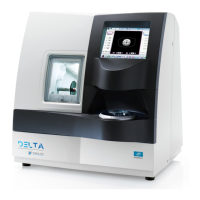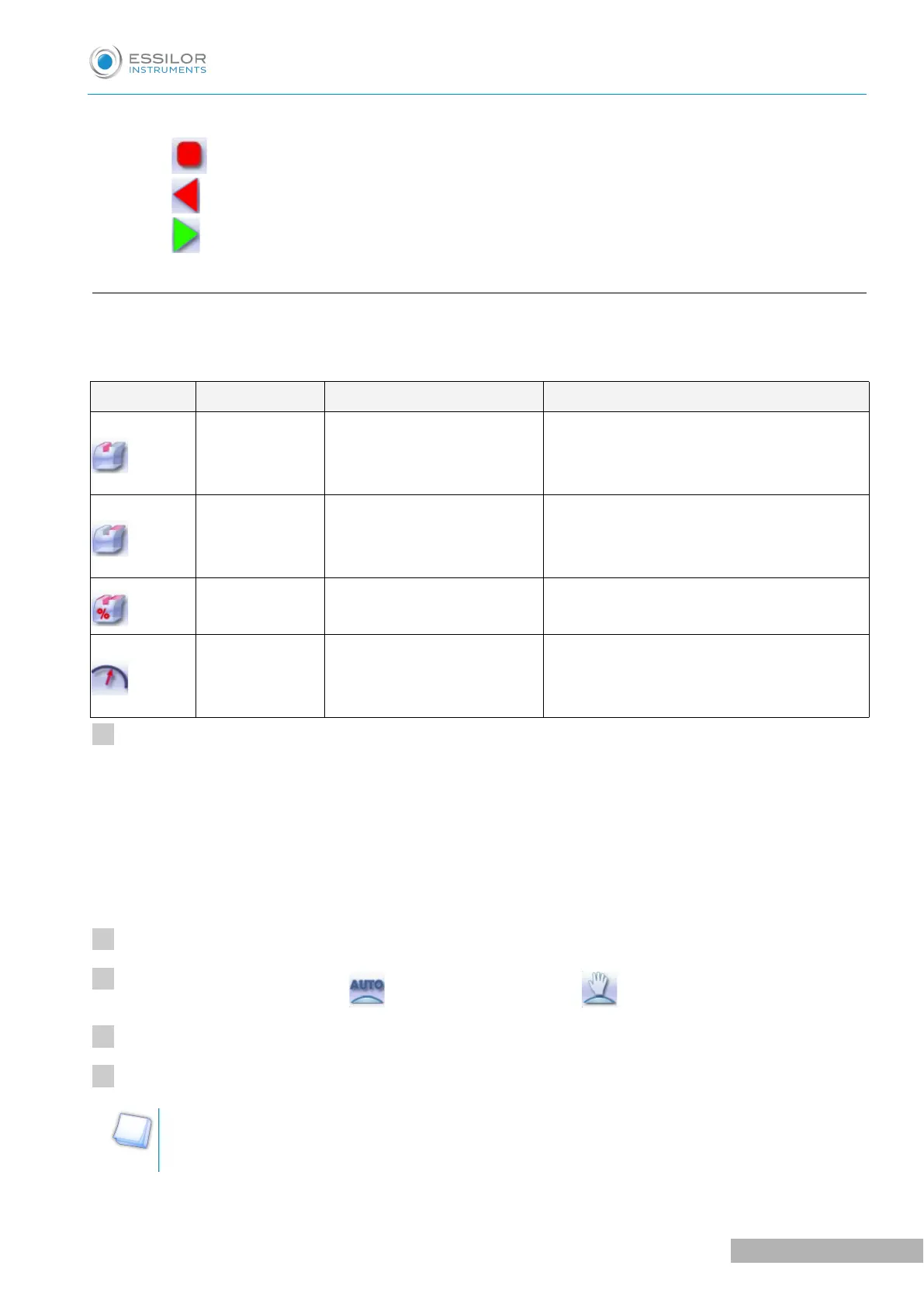10. Navigation
◦ Stop the cycle
◦ Back to the main edging screen
◦ Start the edging cycle
c. Customised grooving
The use of the customized groove depends on two parameters: the frame and the lens. Before starting your
job, identify the major constraint.
GROOVE FRAME LENS ADVANTAGES
Standard groove
Lens for which the front
surface base is approximately
equal to the frame base.
Makes it possible to do an aesthetically
pleasing job. The lens material does not
protrude beyond the front of the frame.
Standard groove
Lens for which the rear
surface base is not as high as
the front surface base.
Minimises the risks of the nylon thread
coming out.
Standard groove Thin lens
Makes it possible to balance out the groove
when thin lenses are used.
Flat base
Cambered base
Thin lens for which the front
surface base is approximately
equal to the frame base.
In the event of pattern tracing (base = 0),
makes it possible to retrieve the frame base.
Call up the desired shape located on the tracer.
The shape is displayed on the edger work screen.
After tracing a pattern, demo lens or recut lens, without any drilling settings:
• the groove finish is selected by default.
• The automatic mode is selected by default.
Select lens material.
Change the edging mode. Press to select customized mode .
Select the type of cycle.
Choose whether or not to polish and/or chamfer your lens.
For more information, consult the section Edging a lens > Perform a polishing (F p.121) and Edging
a lens > Perform a chamfering (F p.121).

